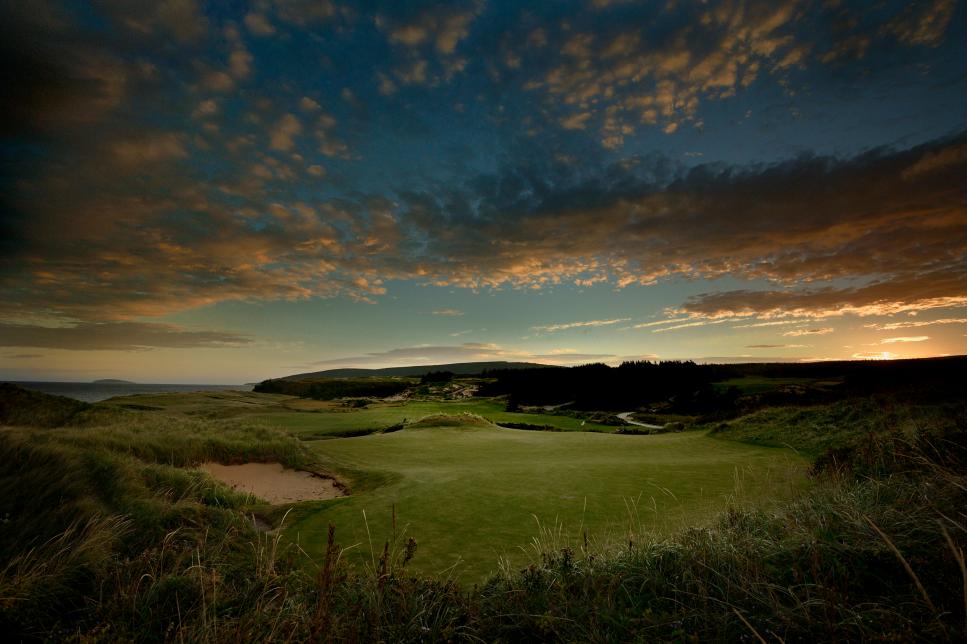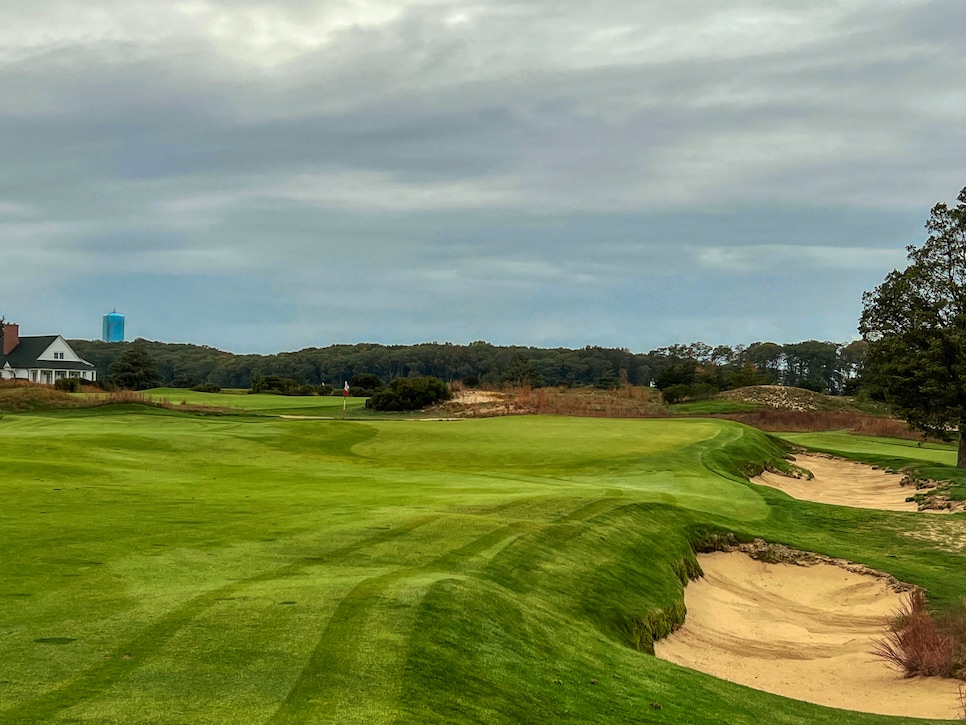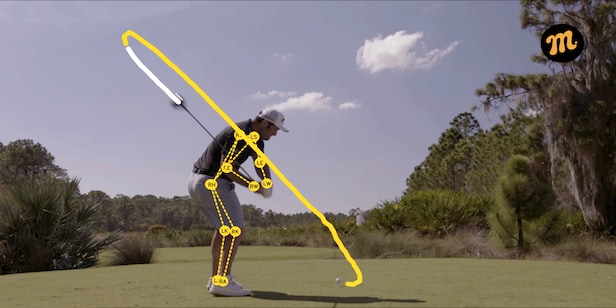A Coore and Crenshaw template, explained: 9 underrated holes that show off the designers’ strategic genius – Australian Golf Digest

- by Admin
- December 21, 2024

Golf course architects strive to create variety in each of their designs, but even the best have favorite concepts and patterns they return to. If it works, why stop?
The best example of an architect developing repeatable golf features is C.B. Macdonald, who built the country’s first 18-hole course for Chicago Golf Club in the early 1890s. Fifteen years later during the creation of National Golf Links of America, he took inspiration from his favorite holes in the U.K., either replicating them or modifying their basic aspects. He later reused many of these “ideal holes” in his other designs, notably at places like St. Louis Country Club, The Lido, Piping Rock and Mid Ocean Club in Bermuda.
Seth Raynor, Macdonald’s surveyor and construction supervisor at NGLA, continued the practice of using template holes in his own original designs in the 1920s, including at Fishers Island, Camargo, Yale and Shoreacres. Pete Dye, who 40 years later was influenced by Raynor’s Midwestern courses, once said that Raynor only knew how to build 22 holes—he just had to figure out which 18 to use.
RELATED: The best Seth Raynor golf courses
Dye, too, often leaned on established versions of holes he’d originated elsewhere, including island-green par 3s, short par 4s with greens hidden behind high mounds and long par 4s that bent gradually around lakes, like the 18th at TPC Sawgrass. Other architects from A.W. Tillinghast to Robert Trent Jones to Tom Fazio all dabbled with variations of pet holes.
As normal as this is, one group you might not expect to dabble in repeat holes is Bill Coore and Ben Crenshaw. Many of the sites they’ve worked, from Sand Hills to Friar’s Head to Bandon Trails, Cabot Cliffs and Sand Valley, have such strong natural assets (sand, isolation, settings in dunes or on oceans) that there seem to be no obstacles to designing unique holes without precedent, whether found in the land or manufactured. But even Coore and Crenshaw have proclivities. At least twice—at We-Ko-Pa and Colorado Golf Club—they’ve built similar Channel holes (first developed by Macdonald), risk-reward par-5s with small alternate island fairways that shorten the distance to the green.
A more common concept they’re fond of constructing is oriented around a type of wide, multi-level green complex with a deep front bunker that burrows into the front center of the putting surface.
It’s riff on what’s known as a Lion’s Mouth green complex, a type of setup that Raynor occasionally used, most dramatically at the Country Club of Charleston and Fox Chapel outside Pittsburgh. The center bunker typically functions like a Road Hole bunker, small, deep and treacherous, cutting off direct access to the middle of the green and forcing play to one side or the other depending on where the hole is located (the flag can also be set directly over the bunker). The green sections on either flank of the bunker (or behind it) are therefore small, so positioning the drive or layup on the same side as the hole location becomes part of the calculation.
Below is an example of Raynor’s Lion’s Mouth bunker at the Country Club of Charleston
Coore and Crenshaw have used this template—and there’s no other way to describe it—at least 11 or 12 times depending on the flexibility of your interpretation. In their version a low bunker is partially recessed into the green, creating an apse, or cove. [An apse is the architectural term for the extended cove or nook at one end of a cathedral where the altar is placed.] For these purposes, this type of hazard can be referred to as an Apse bunker, and this type of green complex an Apse hole.
You can see why it’s an attractive option. The hole only needs one frontal bunker to provide defense and create shot options. The green can be built in almost any setting, whether as a standalone structure in a flat environment or benched into an upslope, often a dune or hillside. And it’s strategically ingenious because players need to be aware of where the flag is on the green before they tee off so they can try to position drives to set up the best approaches either directly into the flanks of the green or diagonally across the bunker.
Let’s examine the Coore & Crenshaw Apse holes.
SAND HILLS GOLF CLUB NEBRASKA HOLE 8
Sand Hills 8
Derek Duncan
The eighth hole at Sand Hills was the first time this concept shows up in the Coore & Crenshaw catalogue. It’s a short par 4 that bends slightly right over two fairway bunkers, and the high-low sectioned green is nestled into the cozy saddle of a sand dune. The bunker creates clear left or right avenues to the flag and presents an attractive low front left hole location, while other pin positions around the putting surface demand precision to keep the ball on the right level.
 Dom Furore false Private Sand Hills Golf Club Mullen, NE 5 15 Panelists
Dom Furore false Private Sand Hills Golf Club Mullen, NE 5 15 Panelists
- 100 Greatest
- Best In State
The golf course wasn’t so much designed as discovered. Bill Coore and Ben Crenshaw trudged back and forth over a thousand acres of rolling sand hills in central Nebraska, flagging out naturally-occurring fairways and greens. Read our full course breakdown here.
Explore our full review COLORADO GOLF CLUB HOLE 14 
Colorado Golf Club 14
Derek Duncan
Raynor’s Lion’s Mouth complex at the Country Club of Charleston is notable for how far forward the green lobes extend on either side of the bunker. The green at Colorado Golf Club’s 14th hole is the closest Coore and Crenshaw have come to replicating that. The short par 4 is potentially drivable, especially in the thin Colorado air, but getting shots to settle onto either of the forward wishbone quarters is the equivalent of placing a ball onto tiny 1,000-square-foot sub-set greens.
 Courtesy of Jon Cavalier false Private Colorado Golf Club Parker, CO 4.3 16 Panelists
Courtesy of Jon Cavalier false Private Colorado Golf Club Parker, CO 4.3 16 Panelists
- Second 100 Greatest
- Best In State
The par-4 10th at Colorado Golf Club, playing downhill off the tee to a green hanging on a slope, with the Colorado Rockies in the far distance, has not a single bunker. Yet it sets the tone for what may well be Coore and Crenshaw’s finest example of how to massage a great golf course from topography that many would have considered ordinary. Read our full course breakdown here.
Explore our full review CHECHESSEE CREEK CLUB SOUTH CAROLINA HOLE 12 
Chechessee Creek 12
Chechessee Creek Club
For average members, the tee shot playing across the marsh at Chechessee Creek Club’s short par-4 12th may be more challenging than the second shot into the demanding green. Not only must it find land, but oaks and coastal pines line the fairway making it extra risky to try to place drives to one side or the other, something this type of hole demands. The green is wider than it is deep, and simply hitting it in regulation is usually the goal here.
STREAMSONG (RED) FLORIDA HOLE 4 
Streamsong Red 4
Derek Duncan
The par-4 fourth at Streamsong Red (also pictured in the title image) is the most strategically constructed of all the Coore and Crenshaw Apse templates. This is due to a long bunker that divides the fairway into left and right sections, along with another smaller bunker farther up the left that protects from players getting too easy an angle into the architects’ widest, shallowest presentation of this type of green complex. The orchestration creates a matrix of options: drive over the bunker directly at the green; play right for a straight in shot to a right side pin or left to a left pin; or approach diagonally over the greenside bunker when flags are set in the extreme rear corners.
 LC Lambrecht false Public Streamsong Resort: Red Bowling Green, FL 4.5 40 Panelists
LC Lambrecht false Public Streamsong Resort: Red Bowling Green, FL 4.5 40 Panelists
- Second 100 Greatest
- 100 Greatest Public
- Best In State
Coore and Crenshaw’s Red Course is part of a resort triple-header that gives golfers a rare opportunity to compare and contrast the differences in styles and philosophies of arguably the three of top design firms in America, including Streamsong Blue, a Tom Doak design, and Streamsong Black, from Gil Hanse and Jim Wagner. Read our full course breakdown here.
Explore our full review
Clear Creek Tahoe 13
Clear Creek Tahoe
This is one of three occasions where the designers use the Apse green complex on a par 5, in this case one that’s 630 yards from the back tees. Very few people here can get home in two shots, so the game is to lay up to a good third-shot distance. Since the green is cocked slightly to the right, the best approach is from the far left edge of the fairway where more of the putting surface is exposed. The green is deeper than most other examples, and it’s placed in one of the most attractive settings atop a ridge overlooking Jacks Valley and the Carson Range mountains beyond.
 false Private Clear Creek Tahoe Carson City, NV 4.5 16 Panelists
false Private Clear Creek Tahoe Carson City, NV 4.5 16 Panelists
- Second 100 Greatest
- Best In State
One gets the feeling Bill Coore and Ben Crenshaw looked long and hard at this mountain property on the east side of Lake Tahoe before agreeing to take the job. On one hand the site is gorgeous, an elevated evergreen forest with views of the surrounding Sierra Nevadas and distant valleys. Read our full course breakdown here.
Explore our full review THE SANDBOX—SAND VALLEY WISCONSIN HOLE 14 
Derek Duncan
The highly creative Sandbox, a 17-hole short course at Sand Valley, was built by Jimmy Craig, a longtime associate of Coore and Crenshaw, with oversight from Bill Coore. This is the only time (to date) the template green has been used on a par 3, this one ranging between 111 and 126 yards. In most cases with an Apse green, players are trying to hit a high spinning shot at the hole, but at the Sandbox it’s just as viable (and more fun) to chip a 7-iron along the ground, or even use a putter to ride the land’s contours onto the putting surface.
MCARTHUR—THE BACK PORCH FLORIDA HOLE 15 
The Back Porch at McArthur 15
Derek Duncan
The site of The Back Porch, the second course at McArthur, this exclusive Hobe Sound club, is built over marshy lowlands and demonstrates the utility of this type of green complex. The featureless land offered nothing to play off of, so the large, cresting green at this par 5, perched up like a wide pedestal, is the hole’s centerpiece. A pair of bunkers in the middle of the fairway 80 yards short of the putting surface control the strategy the way the fairway bunker does at Streamsong Red, making players choose a side to get their favorite approach angle depending on hole location of the day.
WICKER POINT ALABAMA HOLE 9 
Wicker Point
At over 400 yards, the ninth hole at Wicker Point, built in 2022 on the shore of Lake Russell 45 miles northeast of Montgomery, is on the longer side for this type of green. It plays up and over a rise in the fairway requiring a strong drive to bring the apple-shaped green into view and leaving a slightly longer approach than is typical. Once again, the putting surface is wider than it is deep, but collecting slopes in and around the green will help contain inevitable stray shots, particularly to right side pins.
.jpg.rend.hgtvcom.861.646.suffix/1704312078834.jpeg) false Wicker Point Golf Club Alexander City, AL 4.5 14 Panelists
false Wicker Point Golf Club Alexander City, AL 4.5 14 Panelists
The sister course to nearby Willow Point and operated by developer Russell Lands, Wicker Point rides up and down the forested hills of Lake Martin in east-central Alabama, climbing into the highlands before dipping down to the water where five different greens kiss the shore. Architects Bill Coore and Ben Crenshaw used the sometimes abrupt topography to create strategic slide slopes, speed slots and the occasional hit-and-hope blind shot to keep players alert and thinking. Read our full course breakdown here.
Explore our course review
The South Course at Te Arai 14
Ricky Robinson
The 14th hole at Te Arai, opened in 2022, is drivable for longer hitters when wind condition coming off the Pacific Ocean are favorable, but there’s little room for error. Hitting into the gnarly bunker cutting into the front of the green, or into the native sand along the sides, likely takes a three out of the equation, though there’s some space to chase balls onto the putting surface left and right. This green is most like the original Apse putting surface at Sand Hills where the left lobe extends farther toward the fairway—the time to take the shot is when the hole is cut here.
HONORABLE MENTION
The following are modified versions of the Apse hole.
CABOT SAINT LUCIA—POINT HARDY HOLE 3 
This gorgeous par 5 at the property’s highest point plays slightly uphill on the second and third shots toward a large green that’s not entirely visible from the fairway. The bunker short-center sweeps up into the green horizon, but there’s more room than usual to play either left or right, and plenty of space to the center of the green beyond with the right side sweeping downward toward the short grass.
CABOT CAPE BRETON—CABOT CLIFFS NOVA SCOTIA HOLE 2 
Cabot Cliff 2 (from behind)
The bunker at Cabot Cliffs’ second hole is unusual because it is elevated rather than set into the ground. Coore and Crenshaw carved the face out of a dune mound in front of the green, and the hazard blocks the view of most of the putting surface. The green still retains a wishbone shape and approaches have to be carefully placed left or right of the mound when holes are placed toward the front, but much more space exists beyond the bunker—over 40 hidden yards—than most Apse examples.
FRIARS HEAD NEW YORK HOLE 5 
Derek Duncan
There’s no greenside bunker on this short, slightly uphill par 4, though one could imagine the discussions Coore and Crenshaw had about building one. The green is rotated 45-degrees from the normal presentation, so instead of a bunker nestled in the center nook, the “hazard” is now located on the left side of the putting surface, taking the form of an exposed grass mound rather than sand and jutting inward to protect back left pins from left side angles and framing the opening on the right.
This article was originally published on golfdigest.com
The Latest News
-
December 22, 2024China’s Olympic medallist Zheng to skip United Cup to stay fresh for Australian Open
-
December 22, 2024Zheng Qinwen to Kick Off 2025 Season at Australian Open | Sports-Games
-
December 22, 2024Indian team’s Vice-captain has a wholesome exchange with an Australian sports Team: Share jerseys before Boxing-Day Test
-
December 22, 2024Australian cricket could be burned by missing generation of players
-
December 21, 2024Australian media and India clash during restricted presser





